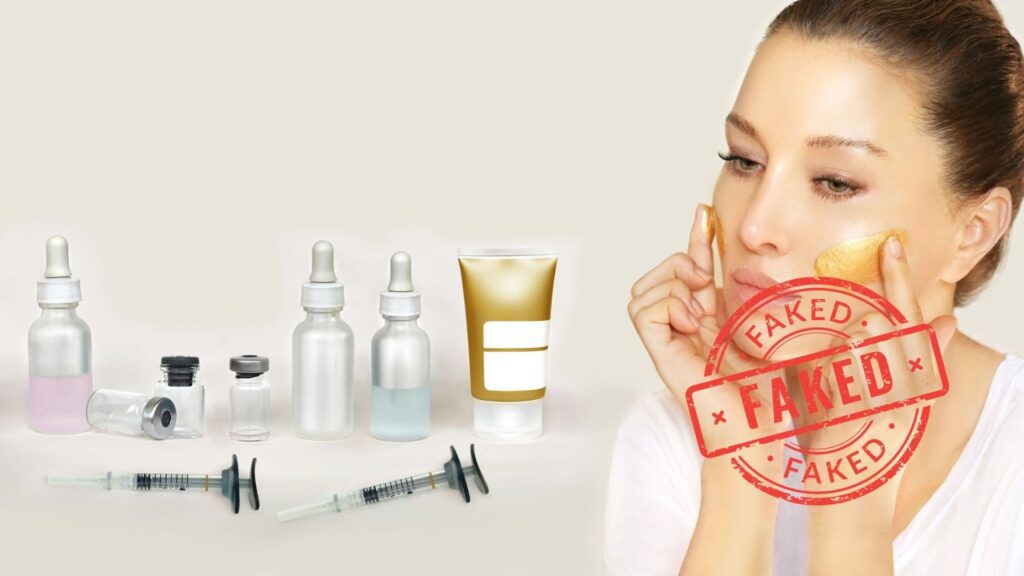
Dermal fillers have become increasingly popular as a non-surgical solution for enhancing facial features and reducing the signs of ageing. However, with their rise in demand, the market has also seen an influx of counterfeit and low-quality fillers. These fake products can pose serious risks to your health and beauty. Therefore, it’s essential to know how to detect fake dermal fillers to ensure you’re getting a safe and effective treatment.
This article will guide you through the key visual features to look out for when determining the authenticity of dermal fillers.
The Dangers of Fake Dermal Fillers
Before diving into detection methods, it’s crucial to understand the potential dangers associated with fake dermal fillers. Counterfeit fillers can contain harmful substances, unsterile ingredients, and inconsistent formulations. The risks include:
- Infections: Non-sterile fillers can introduce bacteria into the skin, leading to severe infections.
- Allergic Reactions: Harmful ingredients can trigger allergic reactions, causing redness, swelling, and pain.
- Lumps and Nodules: Fake fillers may not integrate well with your skin, resulting in lumps and uneven texture.
- Necrosis: In extreme cases, improper fillers can obstruct blood flow, leading to tissue death (necrosis).
- Irreversible Damage: Some adverse effects of fake fillers can be permanent, requiring additional treatments or surgery.
1. Packaging and Labeling
Authentic dermal fillers from reputable brands come with professional packaging and clear labeling. Here are some details to scrutinize:
- Brand Name and Logo: Check for the brand name and logo on the packaging. Counterfeit products often have misspelled brand names or poorly replicated logos.
- Holograms and Seals: Many legitimate brands include holographic stickers or security seals to prevent counterfeiting. Ensure these seals are intact and genuine.
- Batch Number and Expiry Date: Authentic fillers will have a batch number and expiry date printed clearly on the packaging. Counterfeit products might need to be included, smudged, or have inconsistent printing.
2. Syringe Quality
The syringe is a critical component of the dermal filler packaging. Here’s what to look for:
- Material and Construction: High-quality syringes are durable and exhibit precision construction. Look for any signs of poor quality, such as uneven surfaces or flimsy materials.
- Branding on Syringe: Reputable brands often have their name or logo printed on the syringe itself. This printing should be clear and permanent.
- Safety Features: Some brands incorporate safety features, such as tamper-evident caps or specific plunger designs, which are hard to replicate accurately.
3. Consistency and Color of the Filler
The filler itself should exhibit certain characteristics that denote its quality:
- Color: Authentic dermal fillers are typically clear or slightly colored depending on the brand and type. A filler that looks cloudy or has an unusual color is a red flag.
- Consistency: The consistency of the filler should be smooth and uniform. If you notice any separation, clumping, or unusual textures, it could be a sign of a counterfeit product.
4. Product Information and Inserts
Authentic dermal fillers come with detailed product information and inserts:
- Instructions and Guidelines: Look for comprehensive, professionally printed instructions and guidelines. Counterfeit products often need better-written instructions.
- Contact Information: Genuine products include contact information for the manufacturer, including a website and customer service details. Check if the contact information matches the official details provided by the brand.
5. Source of Purchase
Where you purchase your dermal fillers can also be an indicator of their authenticity:
- Authorized Retailers: Always ensure that medical professionals purchase their products from authorized retailers or directly from the brand. Avoid purchasing from unofficial sources, online marketplaces, or third-party sellers who may not guarantee the product’s authenticity.
- Price Too Good to Be True: Be cautious of prices significantly lower than the market average. While discounts are common, extremely low prices can indicate counterfeit products.
6. Professional Verification
If you are unsure about the authenticity of a dermal filler, it’s best to consult a professional:
- Medical Professionals: Only get dermal filler treatments from certified and experienced medical professionals. They have the knowledge and resources to ensure the products they use are genuine.
- Laboratory Testing: In cases of doubt, some medical professionals can send samples for laboratory testing to verify the product’s authenticity.
Detecting fake dermal fillers involves careful examination of packaging, syringes, filler consistency, product information, and the source of purchase. Being vigilant about these visual features can help you avoid the health risks associated with counterfeit products. Always consult with certified professionals who purchase from authorized retailers to ensure the safety and effectiveness of your dermal filler treatments.
Book a consultation with us today and experience the difference between professional care and genuine products. Explore our website or call us now to schedule your appointment.


